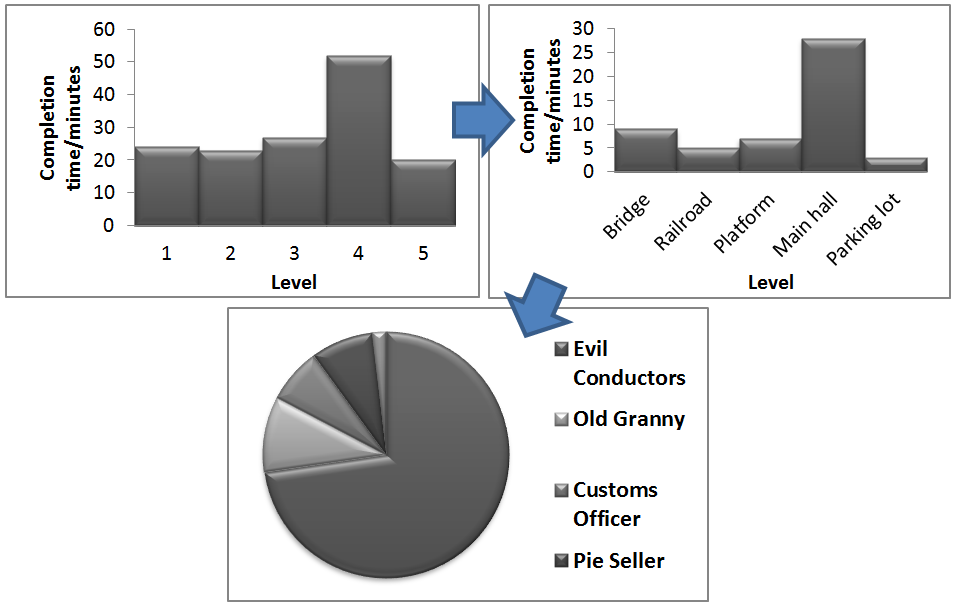· 3 min read
Using Drill-Down Analysis To Find Out Why
Anders Drachen
Anders Drachen, Ph.D. is a veteran Data Scientist, Game Analytics consultant and Professor at the DC Labs, University of York (UK).
To find out why, to dive down into the data and find the root causes of player behavior, drill-down analysis is a flexible and intuitive method requiring minimal training.
Drill-down analysis is one of the most common forms of operations carried out in game analytics, and the term is commonly heard in game data mining contexts. This is because drill-down analysis is a very intuitive method for in-depth analysis of data, making it very useful to player behavior analysis, where the root causes of behavioral patterns are often nestled deep within the data – e.g. a specific checkpoint missing, a single mob being too powerful, a pathway between to areas going unnoticed.
Drill down analysis basically means moving from summary/aggregate information to detailed data via a particular focus. For example, noticing that a group of players have suspiciously high gold income rates in an MMORPG, and working down through the summary data to investigate the raw data of these particular player, to figure out if cheating is happening or not. When performing drill-down, we are essentially performing analysis on the parent attribute (e.g. gold income rate).
In practice, when using business intelligence applications, drilling down is performed by selecting and querying data. This can be as simple as clicking a bar in a bar chart and getting the underlying data, to running queries in a relational database or writing scripts for a particular drill-down path. How far drill-down analysis can be taken depends on data granularity.
A basic example
To begin with, a simple breakdown of data consisting of a few variables is considered, e.g. average completion times for the levels of a game. At this top level, it may be noticed that a level appears to take longer to complete than others (see graphic).
In order to explore why, the underlying data need to be exposed, in this case a breakdown of the completion times for individual components of the level. In this more detailed view of the data, it may be noticed that a specific sector of the level is where the players spend a lot of time (Main Hall).

If the cause of the observed pattern is not obvious from looking at the data, it can be useful to consider the actual game environment – e.g. finding that players do not spot the big weapon they needed in the room preceding the boss. Drill-down analysis works in this way to identify the root cause of patterns that emerge much “higher” in the data. At the lowest level of a drill-down analysis are the raw data.